Have you ever looked at an aisle full of hairbrushes and not had a clue which one you should get? You’re not alone. It’s not like we all take Hairbrushes 101 in school, right? But having the right brush matters more than you might think. Here’s everything you need to know about seven common hairbrush types so you can decide which is right for you.
Detangling Brushes
Detangling Brushes do exactly what the name suggests--they help get tangles out of your hair without breaking it. Regardless of your hair texture, it’s a good idea to have one of these around to rid your hair of tangles before you style it. They’re also great for brushing children’s hair because they won’t cause as much pain as less flexible types.
Paddle Brush
The paddle brush is an old familiar. You probably used one of these broad oval or rectangular brushes growing up, and everyone from your grandmother to your BFF probably has one. They’re popular for a reason--they’re good all-purpose brushes for getting tangles out, adding shine, and smoothing frizz from your hair. But they won’t create a ton of volume, so you’ll need another brush in your collection for that.
Boar Hair
If you’ve ever been advised by your stylist to use a natural brush, this is it. Boar hair is gentle and flexible, but it is best for fine or medium hair. Although a boar hair brush will add shine to all hair types, you’ll have trouble getting through thick hair with boar bristles. Boar hair brushes also work well for damaged hair, but they shouldn’t be used if your hair is wet.
Teasing Brush
Teasing Brushes are also often made of boar bristles, but they are much thinner. Use a teasing brush to create volume by starting a few inches from your scalp and brushing toward your head.
Wet Hairbrush
Brushing your hair when it’s wet isn’t a great idea because it can lead to breakage. But some people with curly hair find that they need to brush when their hair is wet. Whether your hair is only manageable when it’s wet, or you’re just in a rush and don’t have time to dry your hair before brushing it, using a brush made for wet hair is essential.
Wet hairbrushes are designed to minimize damage done while brushing wet hair, and they are typically made of heat-resistant material so they can be used while blow drying, too.
Thermal, Round, and Vented Brushes
If you heat style or blow-dry your hair, a thermal, vented, or round brush is a must. Thermal brushes are usually made of metal with synthetic or combination bristles. The metal holds heat to help your hair dry and is a good choice if you want an at-home blowout.
Vented brushes are also great for helping hair dry since they allow air to pass through. Round brushes are frequently used in combination with blow-drying as well to help shape curls as they dry, and they’re a must-have for recently permed hair.
Synthetic Brushes
Synthetic bristles, like nylon, won’t create as much static as natural bristles, so they’re a good option if you have a lot of frizz. They’re also stiffer, so a synthetic brush works well for thick hair or stubborn tangles.
Remember, everyone’s hair is unique, and you may need to experiment to find the brush that works best for you or ask your stylist for advice. Happy brushing!

